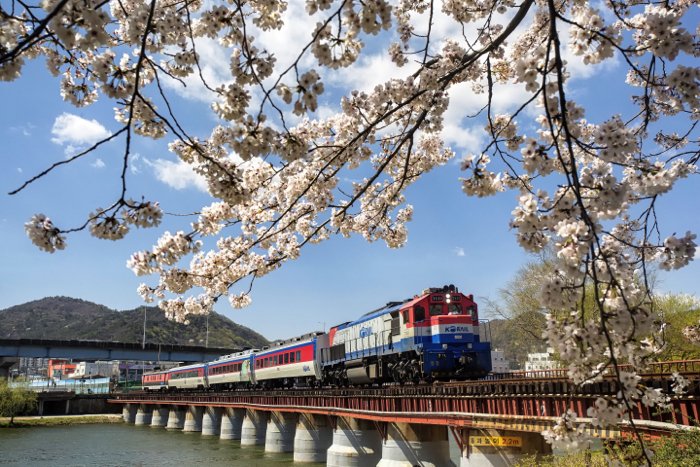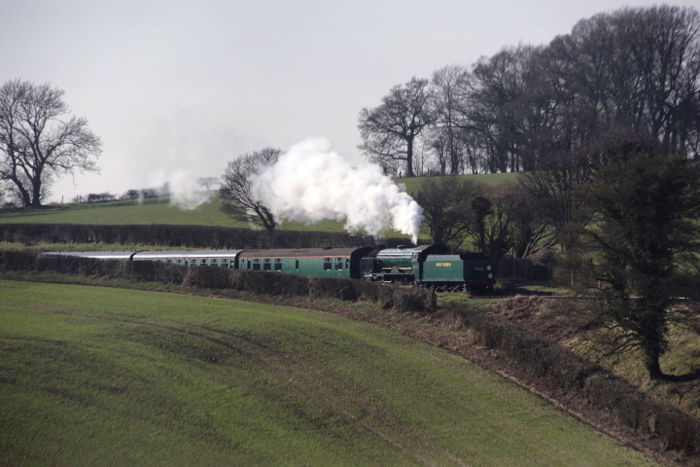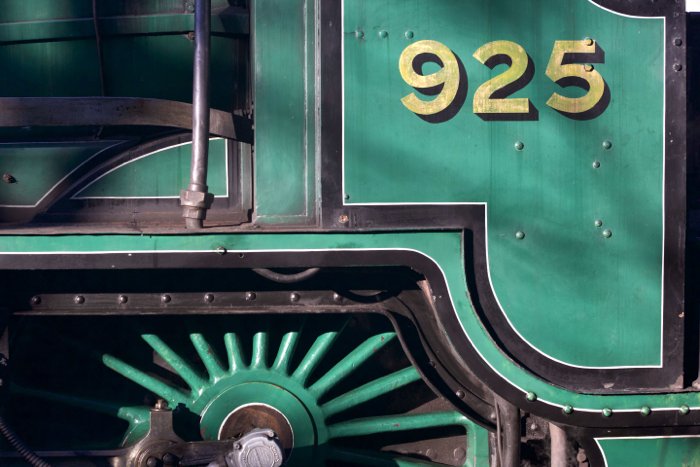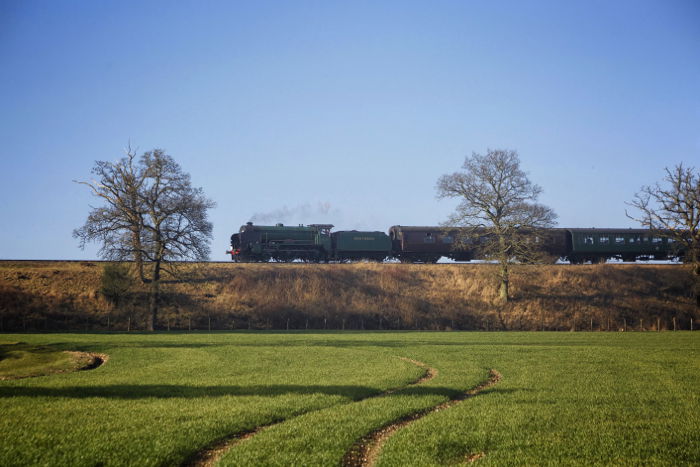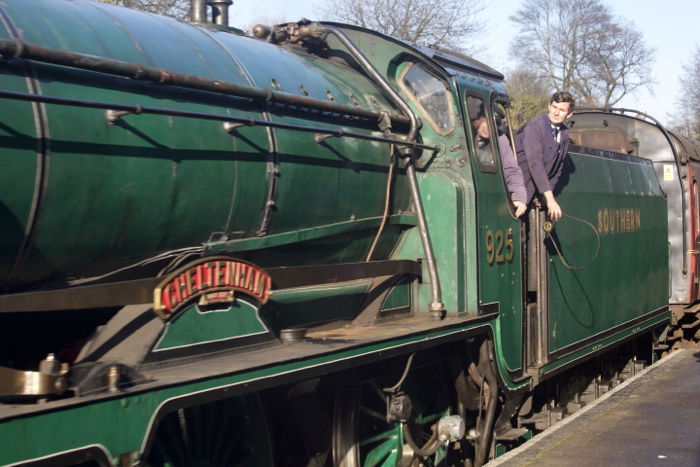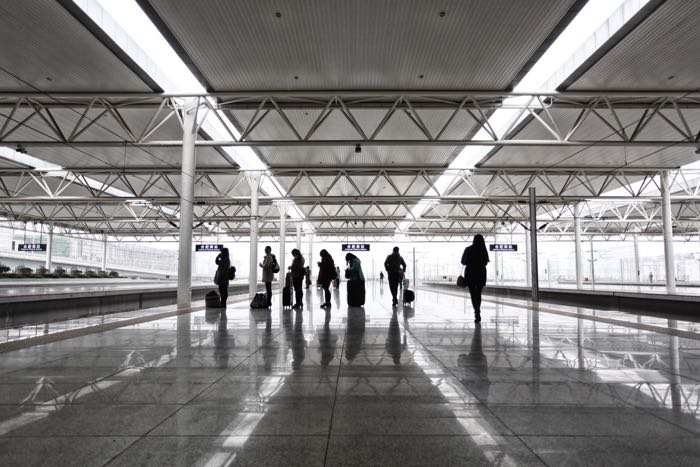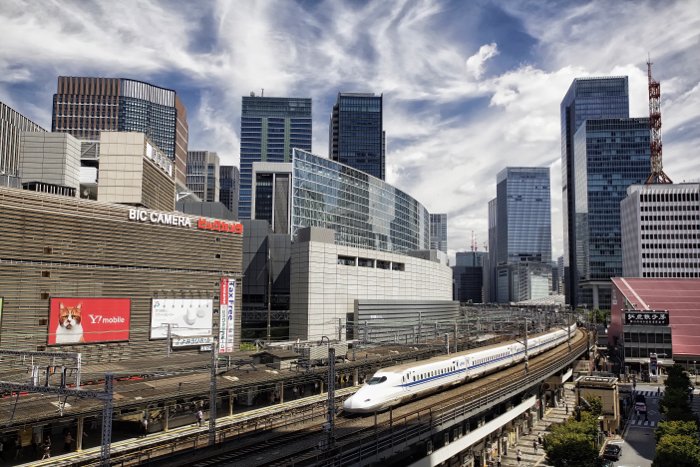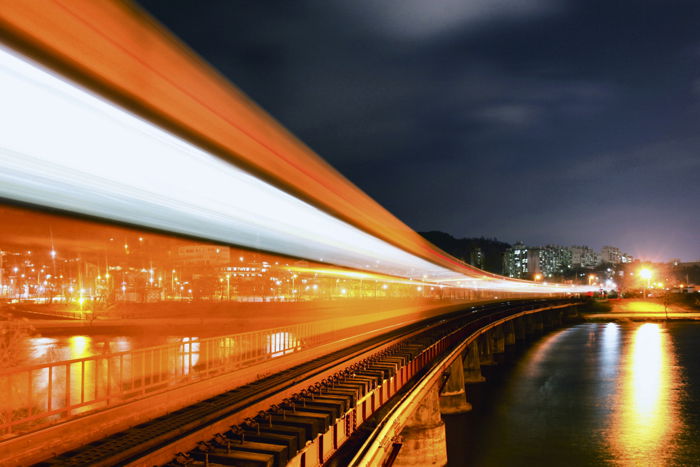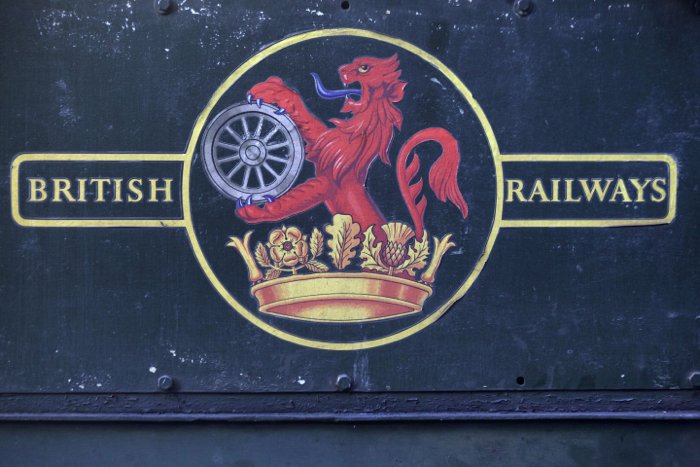Steam Train Photography
Steam trains aren’t widely used these days, and are mainly tourist attractions. One of the first things you’ll need to figure out is where and when these trains run. If you’re lucky and from the U.K., you’ll not have a big problem finding these. Otherwise, some travel could be involved.
Research Train Routes to Find the Best Photography Locations
The first and most important step is finding out where the steam trains are running. There are many heritage railways throughout the world, and you can find them here. Once you’ve identified a line you’d like to visit, it’s time to visit that line’s website. That’s how you’ll find more vital information. You’re looking for the locations of the railway stations and the train schedule. If possible, check the orientation of the train for the day you wish to photograph.
Study the Train Line’s Path for Possible Viewpoints
Once you know the location of the train stations, you’ll want to find out where the line runs. This will either mean using Google maps, or perhaps the train line’s website. You’ll want to find out which roads and footpaths run parallel to the train track. You’ll now want to explore the public access areas for possible viewpoints of the train.
Using Natural Light in Steam Train Photography
This might be better put as use the light in the right way. You’ll find light from different directions will offer you different things, especially with steam involved.
Sunlight behind you – Great for lighting up the scene in front of you, and keeping the train well-lit. This will work well with interesting vegetation in front of you. Sunlight to the side, and behind – This type of light is best for steam train photography. You’ll have the train lit by the sun, and somewhat reflecting the light. You’ll also pick up more texture in the smoke. Sunset and sunrise – Depending on the train’s schedule, photographing during sunset or sunrise can make for dramatic photography.
Use Longer Focal Lengths
It’s a great idea to have a lens with decent focal length for train photography. Locations accessible to the public may mean you’ll really need to zoom in. This is not a bad thing though. You can now compress the scene, and show the train surrounded by the countryside it’s passing through.
Photograph the Details to Create Atmosphere
This is where knowing the location of the train stations comes in handy. Steam trains tend to spend a fair bit of time at the station, especially the terminal ones. This is a good time to take detail photos of the train, while it’s stationary. Look for photos of the wheels, or other mechanical moving parts. The train carriages will also offer good detail photo opportunities, such as the train line’s traditional logo.
Use Shutter Speed for Creative Motion Blur
Depending on the type of photo you want to achieve, you’ll need to adjust your shutter speed. Do you want a sharp photo? Then make sure you’re photographing at a fast enough shutter speed, around 1/300th will be fast enough. This will avoid camera shake from longer focal lengths, and motion blur from the moving train. On the other hand, you may want to capture some motion blur through panning. In this case, select a shutter speed of around 1/30th. Follow the train in a nice smooth motion and take the photo when you’re ready. Whichever shutter speed you decide to use, it’s often a good idea to slightly overexpose the photo. That way you’ll get more details of the train.
Composition for Steam Train Photography
Once again composition will depend on the type of photo you want to take. One thing to avoid is including modern day elements. These will distract the viewer from the mood you’re attempting to create.
Front and to the side – The classic composition for any sort of train photography. You’ll capture the train coming towards you, with a decent amount of context provided by the countryside. Side on – This angle is a great way to get a nice photo of the train, and the carriages behind it. If you can get an angle where you’re below the train, so you’re aiming towards the sky, it will give you a more minimal photo. From a bridge – This is a location where you can get a head-on angle of the train, a nice alternative from the majority of photos that will be side-on.
Include a Human Element
Trains don’t run without the drivers, and in most cases today’s steam trains will be passenger trains. Look to include some people in your train photography to add extra interest. The focus should be on the train drivers, and the platform staff. They are likely to be wearing the traditional clothes of the time. Remember you’re aiming to be consistent with the elements in your frame. Avoid mixing people wearing modern clothing with your steam train photography.
Overground Trains
Overground trains make for great photography as well. Whether you’re photographing commuter trains, fast intercity, or the modern Maglev trains, there will be something of interest for you.
Take Photos of Train Platforms
Photos from the platform edge can be great. You’ll be able to photograph a stationary train, but you can also experiment with stationary passengers with motion blur from a moving train in the background. There will be some countries that view people taking photos on a platform as a security issue. Consider asking permission before you begin to take photos.
Photograph Train Interiors
Photos from the interior of a train can also work well. Once again this is private property, so permission should really be gained beforehand. That said, you’ll usually be OK as long as you’re not being a nuisance. The tunnel-like nature of train carriages makes them ideal for leading lines of seats. You could also experiment with detail photos of the back of a seat, and a blurred-out bokeh background. To achieve the bokeh background, you’ll need a prime lens with a large aperture, which is fully opened up.
How to Find a Vantage Point for Train Photography
Trains pass through cities, and cut through the countryside. A little research on where the actual line runs will give you a good chance to get a great angle for a photo. In the city, you’re looking for buildings that have a clear line of site to the train. Out in the country, access to a bridge over the track, or a hill that gives a clear view down to the train, will help. If you’re in a more remote location, train services could be infrequent. Take care to check the train timetable.
Include Train Light Trails
Trains can make a great subject for light trails, taken using long exposure photography. You’ll need to find a location when this type of photo is safe to take, and a place that gives a good view of the track. Photos taken from a distance as the train snakes through the countryside will give you a nice light line. If you’re able to get near the track, you’ll be able to take a dramatic photo as the train rushes past you.
Underground Trains
Photographing underground trains can be just as much fun, if not more so than overground trains. The discipline is different though. Once again these are private areas you’ll likely be able to take the odd photo in, but for anything more you’ll really need permission from the train operator.
Low Light Photography
The majority of subway lines will be underground, though you will find overground sections. This will mean you’ll be photographing in lower light. You’re going to need a fast lens. There’s no need for longer focal lengths, so using a prime lens of 50mm or wider is ideal. You’ll want to be able to use large apertures of f4 or larger. Prime lenses are capable of going right down to f1.2.
Photograph Tunnels for a Sense of Symmetry
Undergrounds are a warren of tunnels, escalators, and sometimes the odd plaza. These impact the photographer in two main ways. All those tunnels will provide great leading lines for your photos. This is the case both on the platform, and on the way to the platform. Subway stations will also be crowded and compact. Longer focal lengths won’t work in most situations. You’ll need to use wide angle lenses to capture the wider scene. Using wider focal lengths also has the advantage that you can use a slow enough shutter speeds to capture motion blur. And you won’t need a tripod.
Include Motion Blur
The low light situation in an underground station, combined with wider focal lengths, means motion blur is easy to achieve. Whether you plan to use panning to keep the train sharp, or motion blur to blur the train will be your choice. With a wide angle lens, a shutter speeds between 1/20th or 1/30th of a second will be slow enough to capture the motion of a train as it pulls into the platform.
Iconic Signs
A lot of subway lines have iconic signs. The London underground’s ‘mind the gap’ is a great example of this. The circle with the station name running through it is also well known. These are detail photos that you can find throughout the London underground. Other subways lines from other countries will have similar opportunities for sign photos as well.
Photograph Daily Life at the Train Station
A train network is a living ecosystem, and a node for people’s daily lives. Many stations serve more than just the trains themselves. This will offer more photography opportunities. You’ll find the majority of western stations to be quite sanitised. But in other parts of the world, you’ll find much more life.
Train station platforms – These can often include vendors selling their wares. At some stations, you may even see people sleeping on the platform, as they wait for a late overnight train. Train markets – Markets found at train stations, that then spread out beyond the perimeter of the train station, are not uncommon when you travel. In Thailand there is a famous market that runs so close to the track that vendors have to move their products when an oncoming train approaches.
As well as the life of commuters coming and going from trains, the above two examples really show the street photography potential available at train stations. In this scenario the normal ways of approaching street photography will apply. You’ll want a good quality prime lens, such as the 50mm. You’ll need to decide when to interact directly with the people from the market. And when you’ll take quick photos to capture a natural moment without the person you’re photographing realising it.
Safety Around Trains
A word of warning when it comes to train photography. Always take precautions, and avoid trespassing. The train market in Thailand is a rare example of where it’s safe to be on the train tracks. That’s absolutely not the case in a lot of countries, especially where one of the tracks carries an electric current. Even those tracks without electricity are dangerous. Trains make very little noise as they approach. If you’re already on the track, it may be too late by the time you notice them. Stay safe, photography is not worth serious injury or death.
Full Steam Ahead!
You’ve now traveled from the beginner’s station, all the way to the knowledgeable pro. It’s time to go and put what you’ve learned into practice, and take some excellent train photos. Have you taken many train photos before? Do you have any advice about how to get the best results? Which pitfalls, if any, did you encounter? Share your thoughts and photos in the comments section.
